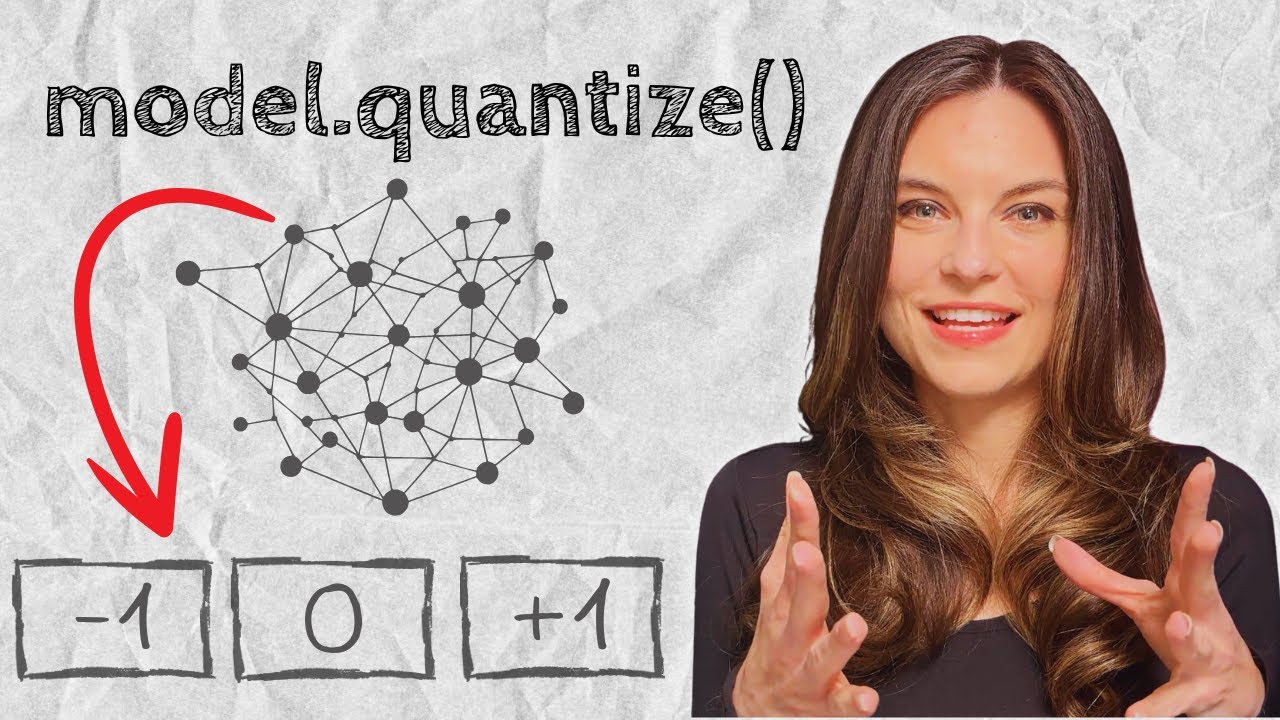The video explains how quantization compresses large AI models by converting floating-point weights and activations into low-precision integers, enabling efficient inference on limited hardware and edge devices through faster, low-power integer arithmetic. It also covers the mathematical principles behind quantization, including calibration, zero points, and fixed-point arithmetic for operations, highlighting techniques like post-training and quantization-aware training to maintain model performance despite reduced precision.
The video introduces quantization as a crucial technique that enables running massive AI models like Deepseek R1 on limited hardware, such as just two GPUs, and deploying models on edge devices that lack floating-point support. Quantization involves mapping continuous real values into discrete buckets, effectively compressing model weights and activations from floating-point numbers to integers. This compression significantly reduces memory usage and speeds up inference, making it possible to handle large models and run AI on low-power devices like Google’s Coral Edge TPU.
The efficiency of integers in quantization stems from their simple binary representation, which allows for fast and low-power arithmetic operations compared to floating-point numbers. Floating-point operations are more complex due to their structure involving sign, exponent, and mantissa, which require multiple CPU cycles to execute. By contrast, integer operations are straightforward and can often be completed in a single clock cycle, contributing to faster and more energy-efficient computation in quantized models.
Quantization typically occurs after model training, during the deployment phase, in a process called post-training quantization (PTQ). While training requires high precision to compute gradients and updates, inference is more tolerant to reduced precision. Some models are also trained with quantization in mind through quantization-aware training (QAT), which helps maintain performance even at very low bit-widths like four bits or less. This approach is essential for extreme quantization scenarios, such as one-bit large language models, which are an active area of research.
The video explains the mathematical foundation of quantization, including symmetric and asymmetric quantization schemes. It covers how real values are scaled and mapped into integer buckets using calibration to determine clipping ranges. The concept of zero points is introduced to handle asymmetric ranges, ensuring zero is properly represented in the integer domain. Dequantization is the reverse process, approximating the original real values from quantized integers, though some precision loss is inevitable due to rounding.
Finally, the video delves into how arithmetic operations, especially multiplication, are adapted for quantized integers using fixed-point arithmetic. This technique allows multiplication by real-valued scales to be efficiently implemented with integer operations and bit shifts, avoiding costly floating-point multiplications. The principles extend naturally to matrix multiplication, the core operation in deep learning, enabling massive computational savings. The video concludes by noting that most modern machine learning frameworks and inference engines handle these complexities internally, making quantization accessible without requiring manual implementation of these low-level details.
